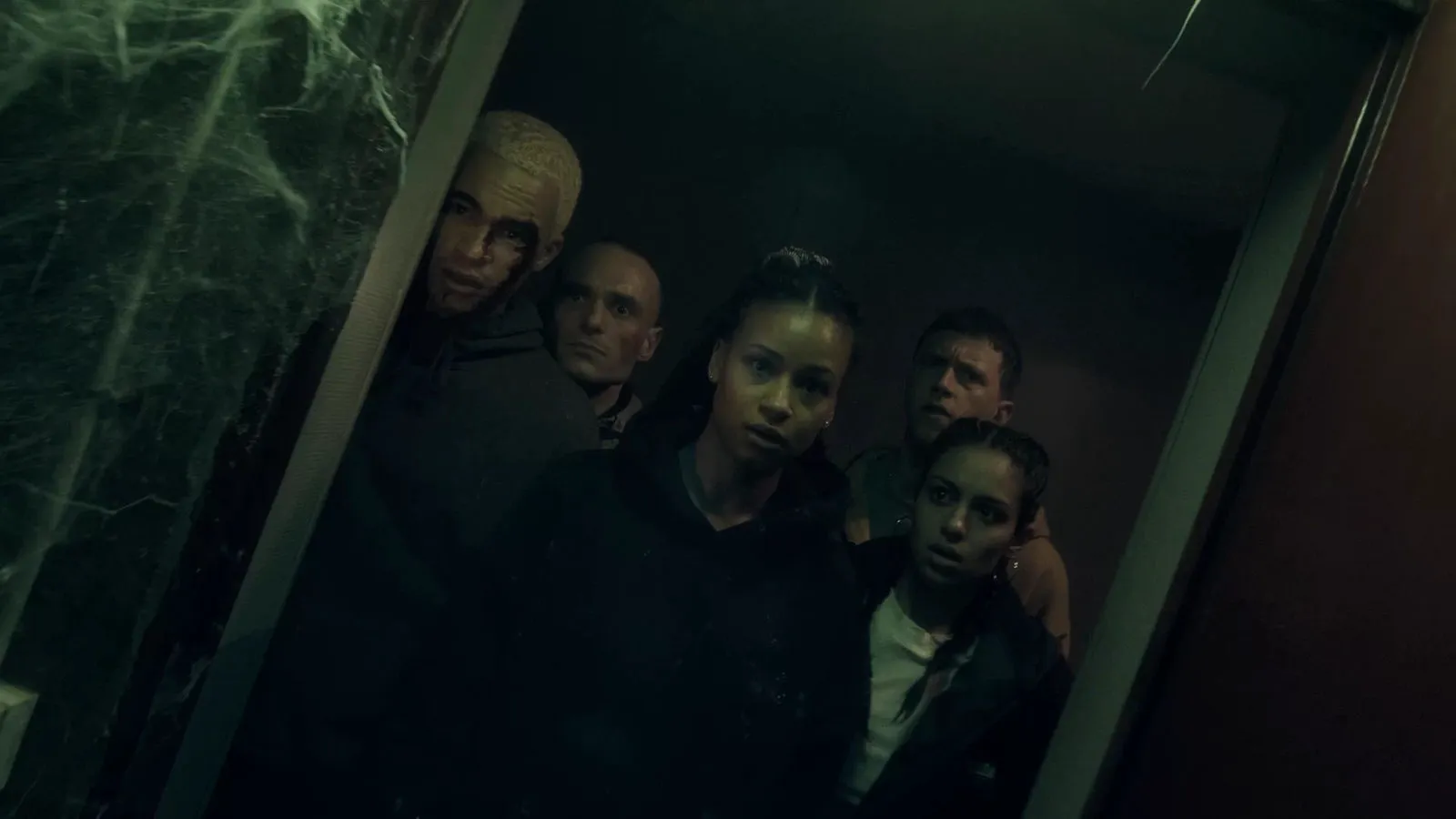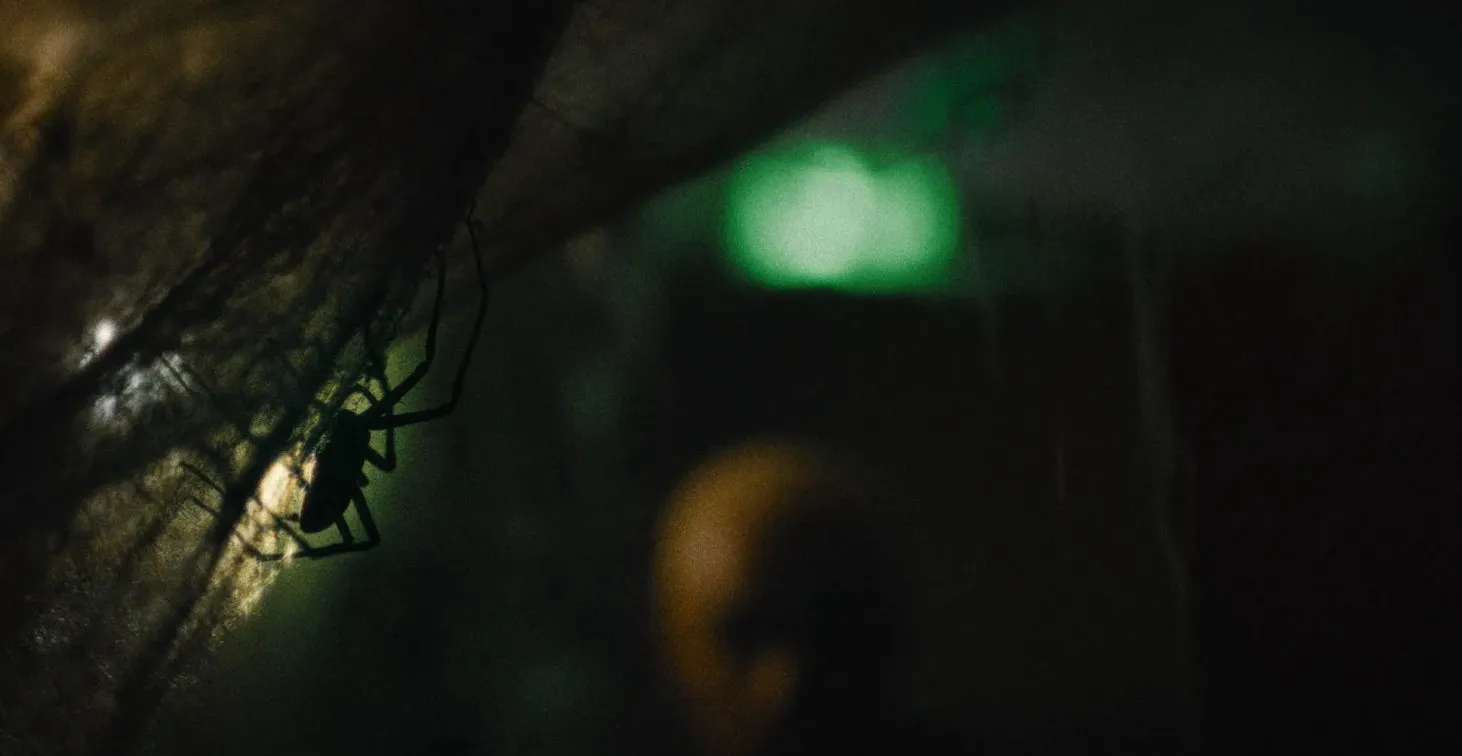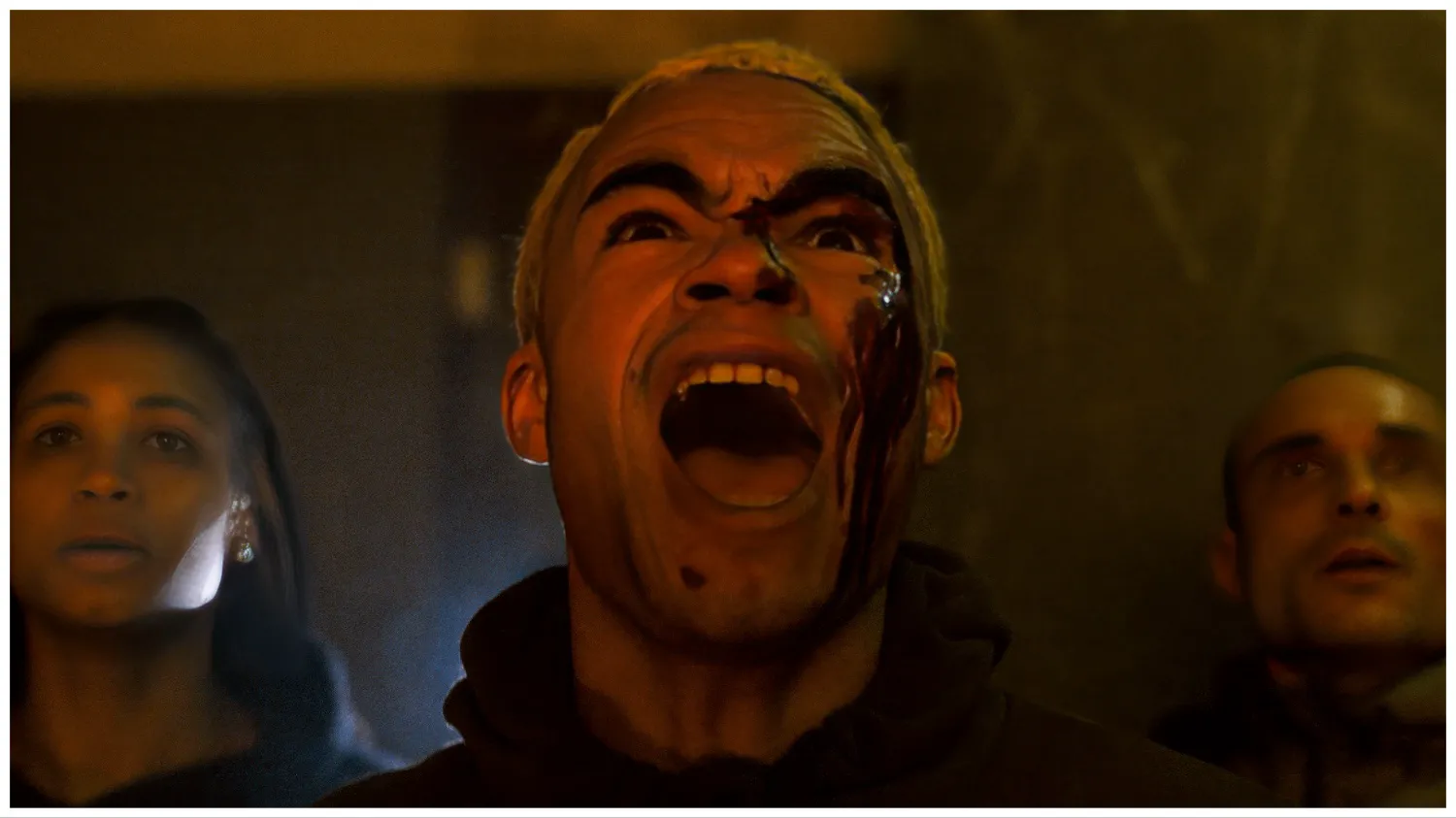Arachnophobia Gets Real: A Review of “Infested”
The opening scene of French director Sébastien Vaniček’s debut film, “Infested” (original title “Vermines”), subtly nods to “The Exorcist.” A group of individuals, perhaps rare artifact hunters or mere smugglers, are in the desert searching for a rare spider species. Despite suffering losses, they successfully transport the exotic arthropod to the Parisian suburbs, specifically to the apartment of Kaleb (Théo Christine), a sneaker reseller and exotic insect enthusiast. His older sister, Manon (Lisa Nyarko), is his only disgruntled neighbor, as she struggles to complete her apartment renovations. However, the new tenant soon becomes a problem not just for the family, but for the entire apartment building, as Rihanna, the spider, begins to reproduce at an alarming rate and her bite proves deadly.

Still from “Infested”
“Infested” premiered at last year’s Venice Film Festival in the “Critics’ Week” sidebar, not the main competition. Nevertheless, its participation in a Category A festival lends it credibility, suggesting the horror stems from deeper trauma rather than cheap special effects involving hairy legs. The spiders appear unsettlingly realistic, not cartoonishly monstrous. In some scenes, real insects are used instead of CGI. Initially, the tiny occupants spread throughout the building like ants crawling on the skin of arachnophobes in the audience. However, the creeping unease doesn’t escalate into a full-blown horror spectacle of web-filled cocoons reminiscent of “Lord of the Rings” or “Harry Potter.”

Still from “Infested”
Social Commentary or Just Creepy Crawlies?
The central contradiction of Vaniček’s debut lies in its ambition: it’s too simplistic for its complex themes and too complex for its simple premise. On one hand, “Infested” attempts to weave in critiques of capitalism, social ills, and the vulnerability of marginalized populations, particularly immigrants. The massive apartment complex is plagued by power outages and broken elevators, with illicit trading in every corner and neighbors breaking into each other’s apartments. In this bleak environment, the spiders rapidly multiply, attempting to colonize a space already inhabited, now quarantined due to the creeping infestation.

Still from “Infested”
Bites and Social Bites
Vaniček touches on various issues, even suggesting that the spiders are less frightening than the French police. However, despite these relevant points, the film fails to articulate anything concrete. The parallel between the spiders and marginalized social groups doesn’t coalesce into a coherent statement, instead serving as an interesting observation. Within the building’s food chain, the venomous insects remain in their initial position: exotic spiders striving to survive in existing conditions, not necessarily aiming to displace the residents. Even in the tense tunnel scene, the immigrants display a calmness too mild for a horror film when “uninvited guests” (the apartment owners) appear in the web-filled corridor.
The survivors, navigating through floors and rooms, argue, reconcile, and address their issues at inopportune moments, trying to resolve everything before being caught in the creatures’ grasp. The film maintains a steady pace, punctuated by dramatic screams, making viewers nervously check for spiders crawling up their sleeves. However, “Infested” is unlikely to join the ranks of elevated horror films. Instead, it will likely serve as a reminder to check the credentials of breeders or carefully research the species before bringing exotic creatures home – and there are no allegories in this passage.